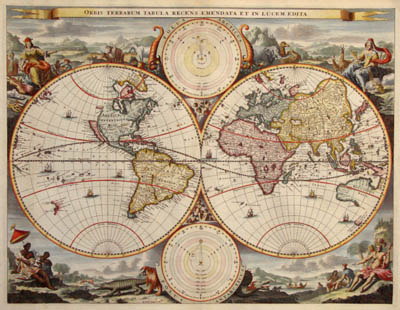
|
How many of the things in life that we measure and depend on are actually read from proxies? That is, we take a measurement from some nearby but more accessible data points or trends, rather than from the thing itself.
For example, my Braun shaver. I have one of those advanced models with the self-cleaning shaver head, one that I don’t have to take apart and flush with hot water to remove the debris—stubble, dead skin, and skin oils, all as a kind of sticky dust. Instead, it has two little liquid-crystal dials on the bottom, one for the battery status, one for the “hygiene” status. When the little bars on the latter fade to near nothing, or to the red bar right above nothing, then it’s time to put the shaver head down in a receptacle that has a reservoir of cleaning fluid and a pump, along with a pair of battery-charging points. I press a button and the cleaning station flushes the head with solution and charges the battery. My hands never touch gunk.
But that got me to thinking. I know that the shaving head does not have electronic sensors to tell the tiny computer in the body—and yes, my electric shaver has a computer—the amount and density of the accumulated debris. Maybe the bars for “hygiene” measure some kind of building drag on the motor from clogging particles. But I doubt that would be a very accurate reading. No, I think the computer just measures how many minutes the shaver has been turned on. The basis for this proxy reading are the assumptions that you are always shaving when the thing is turned on, and that the more you shave, the more debris accumulates.1
So, could I just turn on the shaver, lay it on the counter for five or ten minutes, and get the same reading? That would be an interesting experiment, and maybe tomorrow morning I’ll try it. Too busy cogitating and writing right now …
We knowingly use other proxies for hard-to-access data, especially in medicine. For example, when the nurses take your temperature, what they are looking for is signs of infection, which usually makes your body temperature rise. It’s harder to find infection inside the body by looking for redness, swelling, or pus, so temperature is a good but inexact proxy. You might also have been sitting in a sauna for the past hour. Similarly, they take your blood pressure as a proxy for circulatory health and how hard your heart and other organs are working. However, your blood pressure fluctuates when you stress your body with exercise or your mind with anger or anxiety, or even when you cross your knees, and under other mundane and not life-threatening conditions.
Famously, the climate scientist Michael Mann measured and compared tree rings over a thousand-year period attempting to show the global temperature variation—or lack of variation—through what historians have dubbed the “Medieval Warm Period” and the “Little Ice Age” in Europe. In Mann’s calculations, tree-ring width is a measure of annual temperature. But I had always heard that tree rings were wider in wet years, narrower in dry years, and that precipitation is not strictly dependent on temperature. Northern forests can get a lot of rain, but so can jungles. Mann was using a proxy measurement whose correlation was not universally accepted.2
Humans have always used proxies to replace hard-to-access measurements. Ancient hunters followed trails not measured in miles of distance or feet of elevation, and they had no drawn maps to measure from. Instead, they used waypoints: turn left at the big tree; cross the river and follow the bank to the right. Today, we use GPS navigation that also gives us waypoints: “Five hundred feet ahead make a left turn. Your destination is the third house on the right.”
In Spanish and Mexican California, the far-off government made land grants of ranches to major citizens with diseños, or sketch maps of the ground using existing features as markers. Because the land had not been surveyed or measured, this was the only way to identify a property. In the Bay Area, for example, one border might be the shoreline above high tide and the opposite border the crest of the coastal range. And in between, the markers might indicate the north and south boundaries by a stream or a prominent rock or grove of trees. Since these were truly huge plots of ground—often the size of a modern county—with neighbors few and far between, defining an exact border within a few feet was irrelevant.
These days, after the scientific revolution—and a lot of population crowding—we crave exact measurements. And we believe that what we are measuring is real, valid, and applicable.3 But that is not always the case.
1. And now I wonder if the battery indicator doesn’t work the same way. That is, rather than measuring voltage or amps or whatever in the cell, it just measures the time the shaver is turned on and assumes a steady drain on the battery. … Maybe my whole life is a lie.
2. This is not a criticism or a defamation, just a theoretical observation. Please don’t add me to the lawsuit.
3. But look at the popular measurement of “wind chill.” It takes the stationary measure of temperature at a single spot—usually attempting to be representative of a wide area—and then adjusts it with a formula that reduces the reading by certain amounts at certain wind speeds. That is probably only useful in a storm, where the winds are strong and steady, although I found it useful when riding a motorcycle to know how tightly to bundle for a ride at thirty or sixty miles an hour.
No comments:
Post a Comment